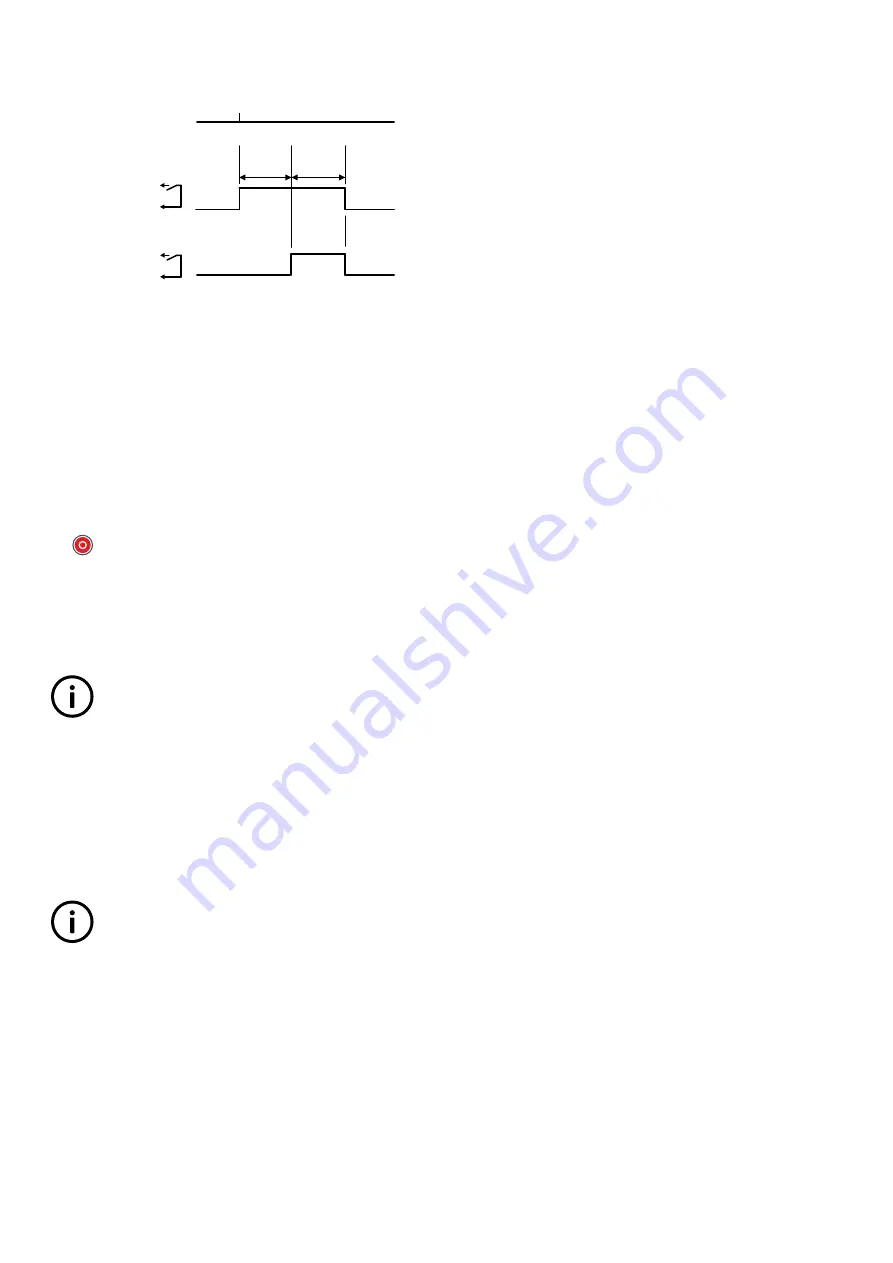
Table 8.15
Successful engine start sequence with start prepare
Start
attempts
1
Crank
Start
prepare
t1
t2
(1)
(3)
(2)
t1 = Start prepare (
Parameters > Engine > Start sequence > Start
prepare > Start prepare
)
t2 = Extended start prepare (
Parameters > Engine > Start sequence >
Start prepare > Extended start prepare
)
1.
Start attempts
2.
Start prepare
:
Engine > Start prepare
(digital output) (optional).
a. At the start of each start sequence, the controller activates the
Start prepare
output for the time in the
Start prepare
parameter
(
t1
). All other engine start outputs (that is,
Stop coil
,
Crank
) are
not activated during this time.
b. If there is an
Extended start prepare
time (
t2
), then the
Start
prepare
output remains activated for this time during cranking. If
cranking stops before the extended start prepare timer stops,
then the controller deactivates the
Start prepare
output.
3.
Crank
:
Engine > Crank
(digital output). After the
Start prepare
time,
the controller activates the
Crank
output.
8.3.4 Interruption of the start sequence
These actions interrupt the engine start sequence:
•
The
Emergency stop
digital input is activated (for example, from the operator, or a PLC)
•
When the controller is in SEMI mode, there is a
Stop engine
command. For example: The operator pushes the push-button
Stop
on the display unit.
•
The following alarm actions:
◦
PMS-controlled stop
◦
Trip generator breaker and stop engine
◦
Trip generator breaker and shutdown engine
INFO
The
Block
alarm action will not interrupt the genset start sequence after it has begun. However, the
Block
alarm action
prevents a new genset start sequence from starting.
When the start sequence is interrupted, the controller does the following:
•
Deactivates the
Crank
output.
•
Activates the
Stop coil
output (if present). Alternatively, deactivates the
Run coil
output (if present).
•
Deactivates the
Start prepare
output (if present).
There is no cooldown period when the engine start sequence is interrupted.
INFO
If
Running detection
is ON, the controller regards the engine as started. When the engine has started, the actions listed
here do not interrupt the engine start sequence, but result in a engine stop instead. The engine stop normally includes the
cooldown period configured in the controller. However, for a shutdown, there is no cooldown period.
8.4 Engine stop
8.4.1 Engine stop function
For a normal genset stop, the controller ensures that the genset runs for a cooldown period before stopping. If a shutdown alarm
action shuts down the genset, there is no cooldown period.
DESIGNER'S HANDBOOK 4189340911K UK
Page 295 of 521















































